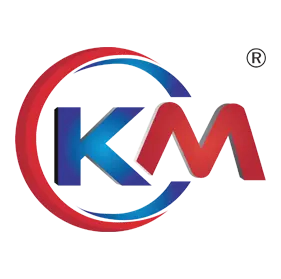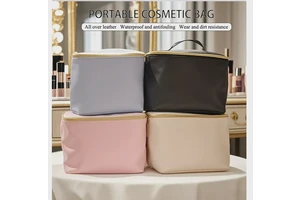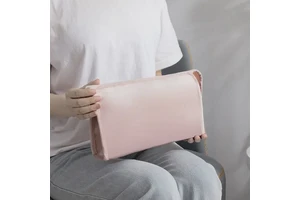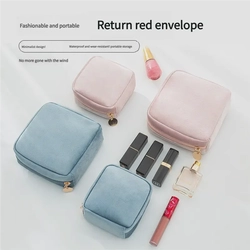What Makes a Makeup Bag "Eco-Friendly"? A Guide to Sustainable Materials & Ethics
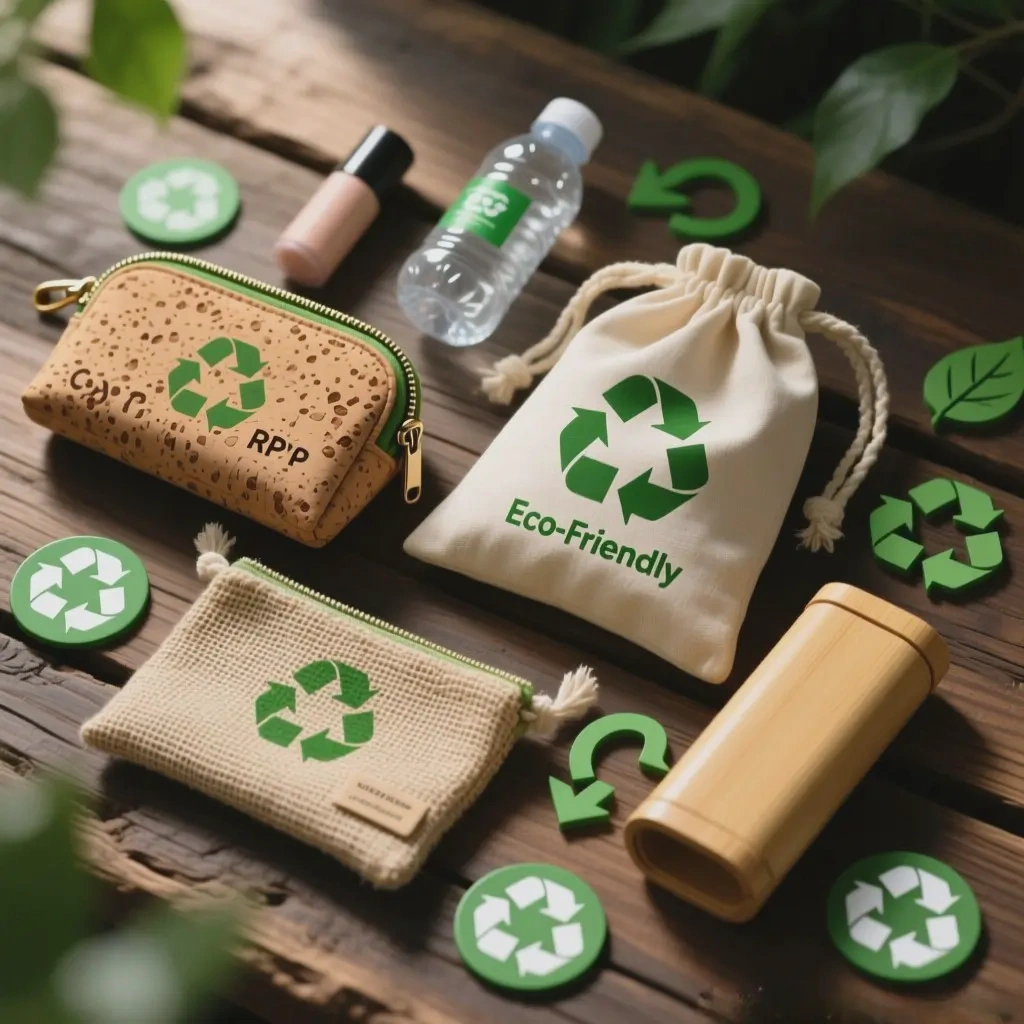
The term "eco-friendly" gets thrown around a lot in the beauty world, but when it comes to makeup bags, what does it truly mean? An authentic eco-friendly makeup bag considers everything from the source of its materials to its manufacturing process and ultimate disposal, offering a sustainable alternative that doesn't compromise on style or functionality.
Discover what truly makes a makeup bag eco-friendly, from certified sustainable materials like RPET and cork to ethical production practices. Learn to identify greenwashing and make informed choices for a greener beauty routine.
Understanding genuine sustainability requires looking beyond surface-level claims. Let's explore the key factors that differentiate truly eco-friendly makeup bags from those simply riding the green wave.
Decoding Environmental Claims in Beauty Accessories
Sustainable Material Guide for Makeup Bags
Understanding the Full Product Lifecycle
Ethical Considerations Beyond Materials
Decoding Environmental Claims in Beauty Accessories
The beauty accessories market is flooded with environmental claims that can confuse even the most conscious consumer. Understanding these terms is crucial for identifying genuinely sustainable products versus those engaging in greenwashing.
Terms like "natural," "green," and "eco-friendly" often lack legal definitions, making independent verification and specific certifications essential for authentic sustainable choices.
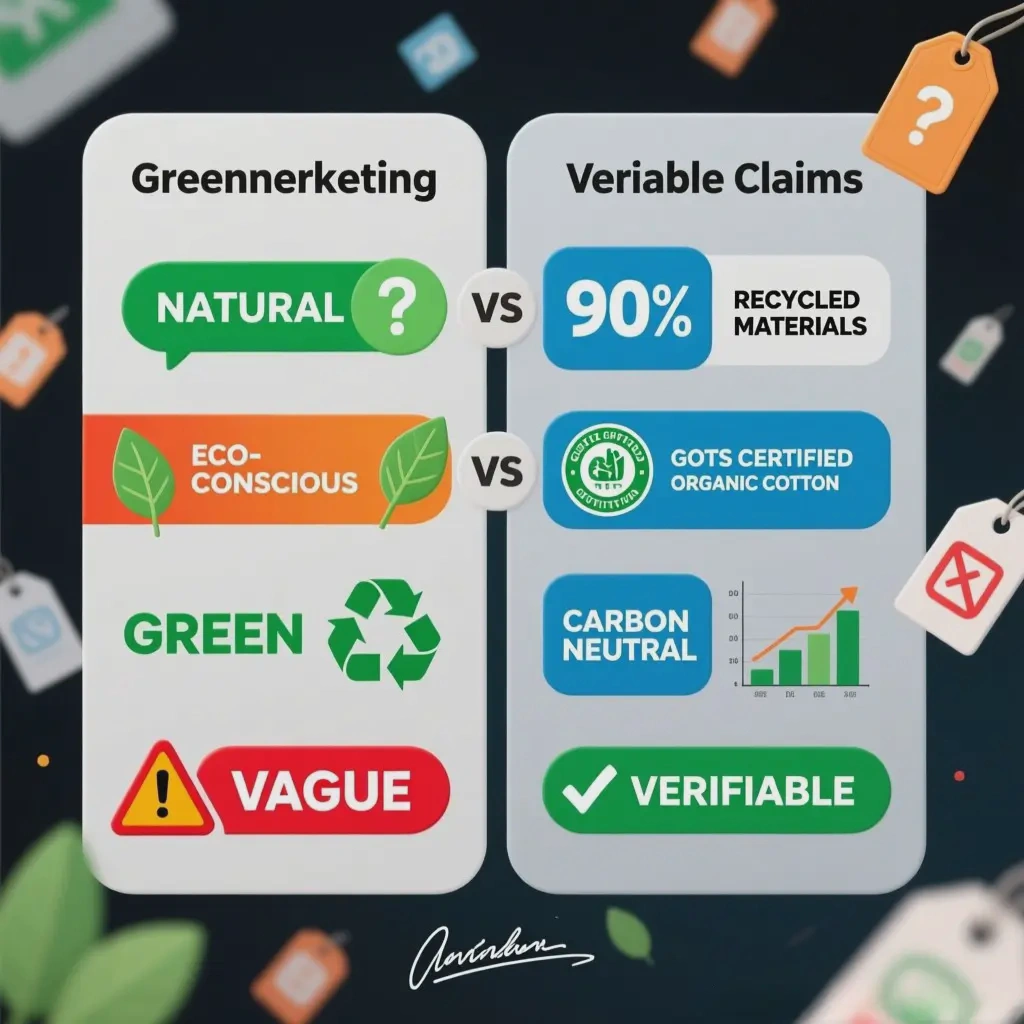
The Federal Trade Commission's Green Guides provide a framework for environmental marketing claims, yet many brands push boundaries with vague terminology. According to a 2023 study by the Changing Markets Foundation, 68% of environmental claims in the fashion and accessories sector were unsubstantiated or misleading. Genuinely sustainable brands typically provide transparent supply chain information, specific material percentages, and third-party certifications. The most reliable indicators include detailed information about manufacturing locations, water usage reduction data, and carbon footprint calculations, going beyond superficial environmental messaging to demonstrate concrete sustainable practices.
Sustainable Material Guide for Makeup Bags
The materials used in a makeup bag's construction form the foundation of its environmental impact. From innovative recycled fabrics to rapidly renewable plant-based options, sustainable materials have evolved significantly beyond basic organic cotton.
Modern eco-friendly materials range from recycled plastics transformed into durable fabrics to natural materials harvested without ecosystem damage, each offering unique environmental benefits.
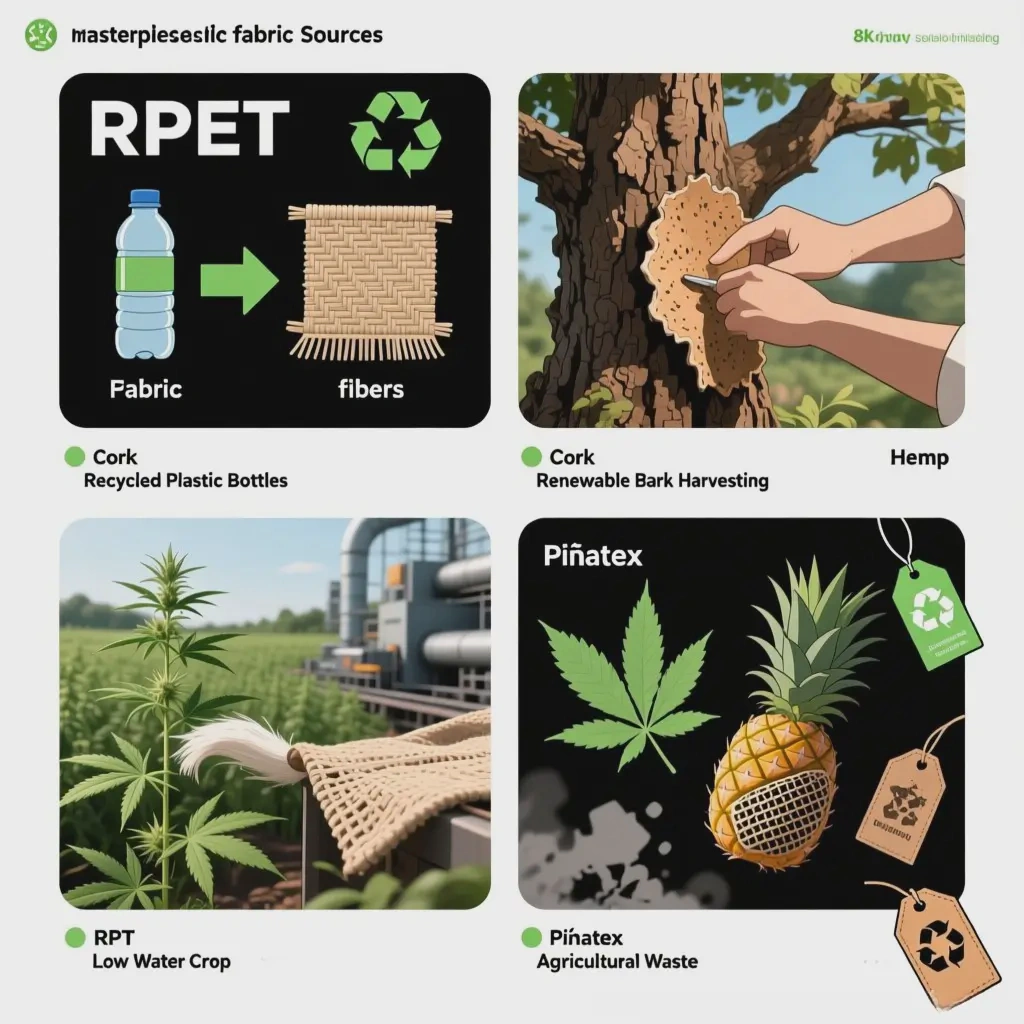
Key sustainable materials include:
Recycled Synthetics:
RPET (Recycled Polyethylene Terephthalate): Made from post-consumer plastic bottles, reducing ocean plastic and requiring 50% less energy than virgin polyester
Recycled Nylon: Often sourced from fishing nets and industrial waste, offering durability with reduced environmental impact
These materials support circular economy principles while maintaining water resistance and durability
Natural & Renewable Materials:
Cork: Harvested from cork oak trees without cutting them down, naturally waterproof and antimicrobial
Organic Hemp: Grows rapidly without pesticides, requires minimal water, and produces durable fabric
Linen: Made from flax plants that thrive in poor soil with little irrigation
These materials are biodegradable and have a low environmental impact during production
Innovative Plant-Based Alternatives:
Piñatex: Made from pineapple leaf fibers, a byproduct of the food industry
Apple Leather: Created from apple pomace leftover from juice production
Mushroom Leather: Grown from mycelium, completely biodegradable
These represent the cutting edge of sustainable material science
According to the Environmental Protection Agency, using recycled PET reduces energy consumption by 75% compared to producing virgin polyester, making it one of the most impactful choices for sustainable accessories.
Understanding the Full Product Lifecycle
True sustainability extends beyond the initial materials to encompass the entire lifecycle of a product. From manufacturing energy use to end-of-life disposal, every stage contributes to the overall environmental footprint.
A comprehensive lifecycle assessment considers production methods, transportation distances, product durability, and disposal options to evaluate genuine environmental impact.
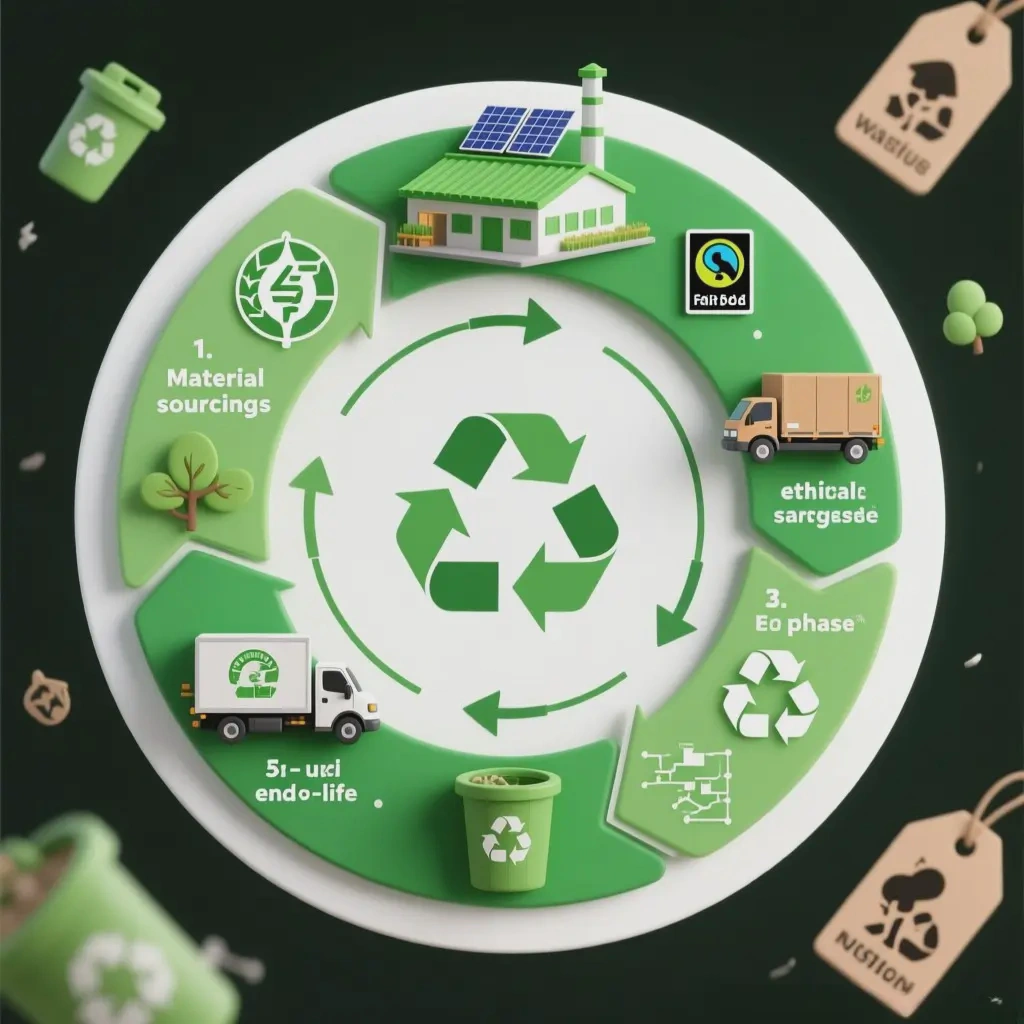
The product lifecycle encompasses several critical phases:
Production Phase:
Water usage and treatment in fabric production
Energy sources for manufacturing facilities (renewable vs. fossil fuels)
Chemical management and worker safety protocols
Waste reduction during cutting and assembly
Use Phase:
Durability and repair potential affect replacement frequency
Cleaning requirements and their environmental impact
Versatility for different uses, extending functional life
Material safety and off-gassing during use
End-of-Life Phase:
Biodegradability in appropriate conditions
Recyclability through existing infrastructure
Take-back programs facilitate proper disposal
Upcycling potential for creative reuse
The Sustainable Apparel Coalition's Higg Index provides standardized measurement tools for assessing environmental impact throughout these lifecycle stages, helping brands identify improvement opportunities and consumers make informed comparisons.
Ethical Considerations Beyond Materials
Environmental sustainability cannot be separated from social responsibility. The most genuinely eco-friendly brands consider their impact on people and communities alongside their environmental footprint.
Ethical manufacturing encompasses fair labor practices, community support, and transparent business operations that extend sustainability beyond materials to social impact.
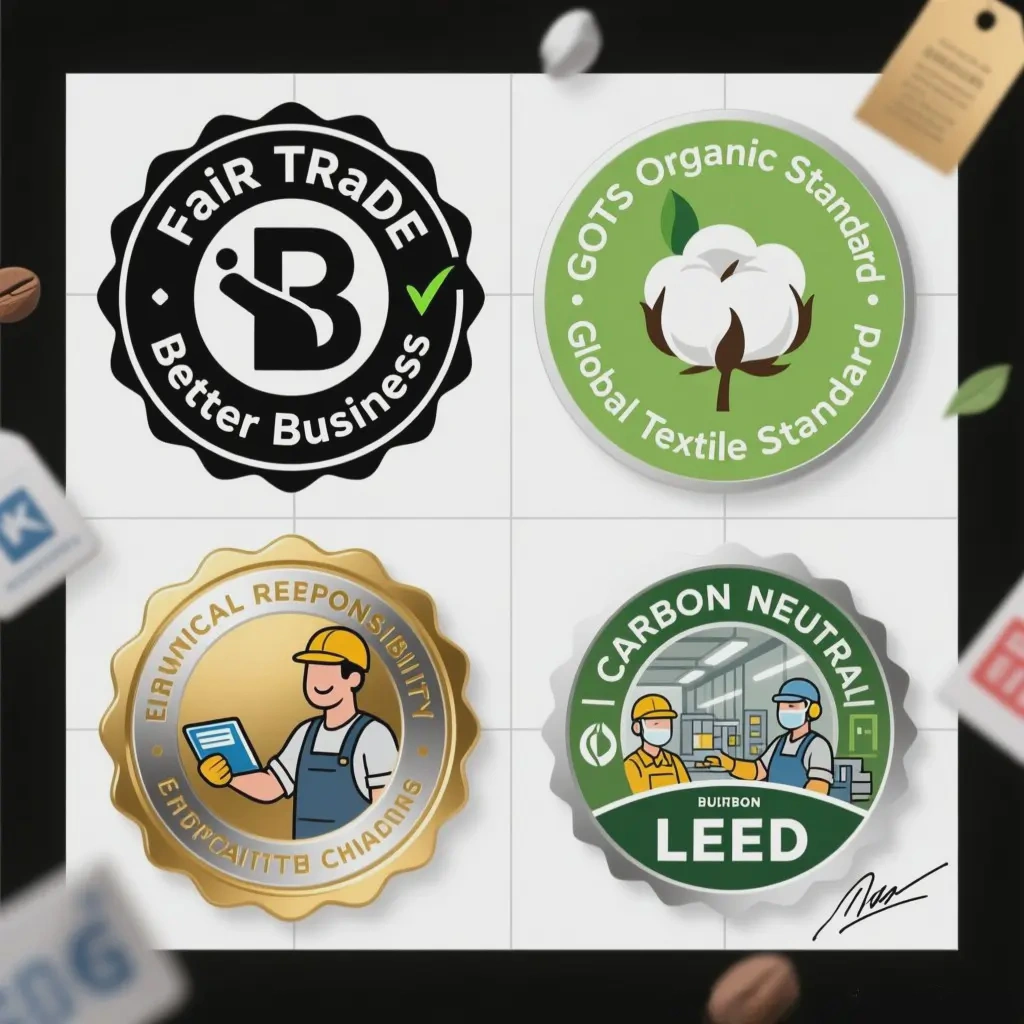
Key ethical considerations include:
Labor Practices:
Fair living wages rather than minimum wages
Safe working conditions and reasonable hours
Worker representation and collective bargaining rights
Prohibition of child and forced labor
Certification Programs:
Fair Trade Certification: Ensures fair prices and safe working conditions
B Corp Certification: Measures social and environmental performance
GOTS (Global Organic Textile Standard): Covers both ecological and social criteria
WRAP (Worldwide Responsible Accredited Production): Focuses on ethical manufacturing
Community and Environmental Stewardship:
Local community investment and development programs
Charitable giving and environmental advocacy
Supply chain transparency and accountability
Continuous improvement commitments
According to B Lab, certified B Corporations must meet rigorous standards of social and environmental performance, accountability, and transparency, representing the gold standard in business ethics and sustainability integration.
Conclusion
A genuinely eco-friendly makeup bag represents the convergence of sustainable materials, responsible manufacturing, ethical business practices, and thoughtful end-of-life planning. By looking beyond surface-level marketing claims to verify material certifications, manufacturing transparency, and social responsibility, consumers can make choices that align with their environmental values. The most sustainable option often balances durable, recycled, or rapidly renewable materials with ethical production and designs for longevity, creating beauty accessories that minimize environmental impact while maximizing functionality and style.
[External links recommendation]:
Organic Eco-friendly Makeup Bags | Cruelty Free Bags
Shop for Upcycled Makeup Pouch
Organic Cotton Toiletry Bag for Travel, Makeup, and - Simple Ecology
